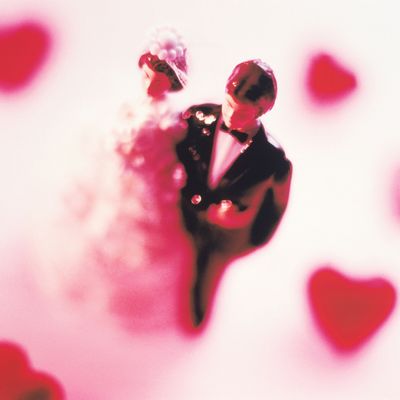
In honor of Valentine’s Day, Science of Us is spending this week talking about love — specifically, what happens when it goes wrong. If you ever wondered about the psychology of breakups, we’ve got you covered.
Americans are known around the world for being (dangerously) optimistic; they’re more likely to say their day was “particularly good” than citizens of wealthy European countries. That can-do spirit extends to marriage, even if it didn’t work the first time.
This is a theme within the statistics collected by Pew Research Center demographer Gretchen Livingston in a Valentine’s-centric new post. While marriage itself is famously on the decline — at the lowest rate since at least 1920 — remarriage is on the upswing. In 1960, just 13 percent of all married people had been hitched sometime before; by 2013, that figure was up to 23 percent.
Also, for 2013, a full 40 percent of weddings had at least one partner who’d been married before. A full 20 percent — or one fifth — were between two people who had both been newlyweds at least once before. Evidently, guys are more into trying it again than gals: 30 percent of previously married men told Pew that they didn’t want to marry again, compared with 54 percent of previously married women.
This all speaks to how marriage, as a social phenomenon, is changing. Before the 20th century, the grave was the concluder of most marriages. As Science of Us has reported before, colonial America had marriages that lasted about 12 years on average, thanks to disease and war and natural disaster. In 1900, a full two-thirds of marriages in the U.S. ended with a partner dying, which fell to under one-third by 1976. Conversely, in 1867, under 10 percent of marriages turned into divorce. That was up to 50 percent by 1985, a number that’s stayed stable(ish). It now stands at 52.7 percent, according to University of Maryland sociologist Philip Cohen’s crunching of 2010–2012 American Community Survey data. But the precarity of matrimony isn’t exactly new.
Take it from historian Beatrice Gottlieb: “The ambiguities of monogamy are not a recent phenomenon,” she wrote in a history of the family from the Black Death to the industrial age. “Law, religion, and literature may proclaim the exclusiveness of the marriage bond and extol the ideal of one man and one woman linked through eternity, but marriage as lived in the real world has always been something else.” And in the modern era, a good divorce is better than a bad marriage.





